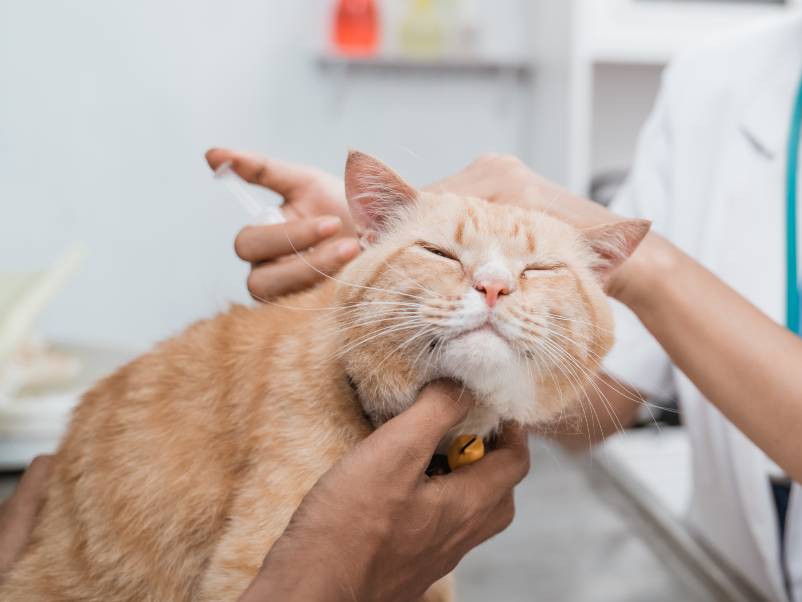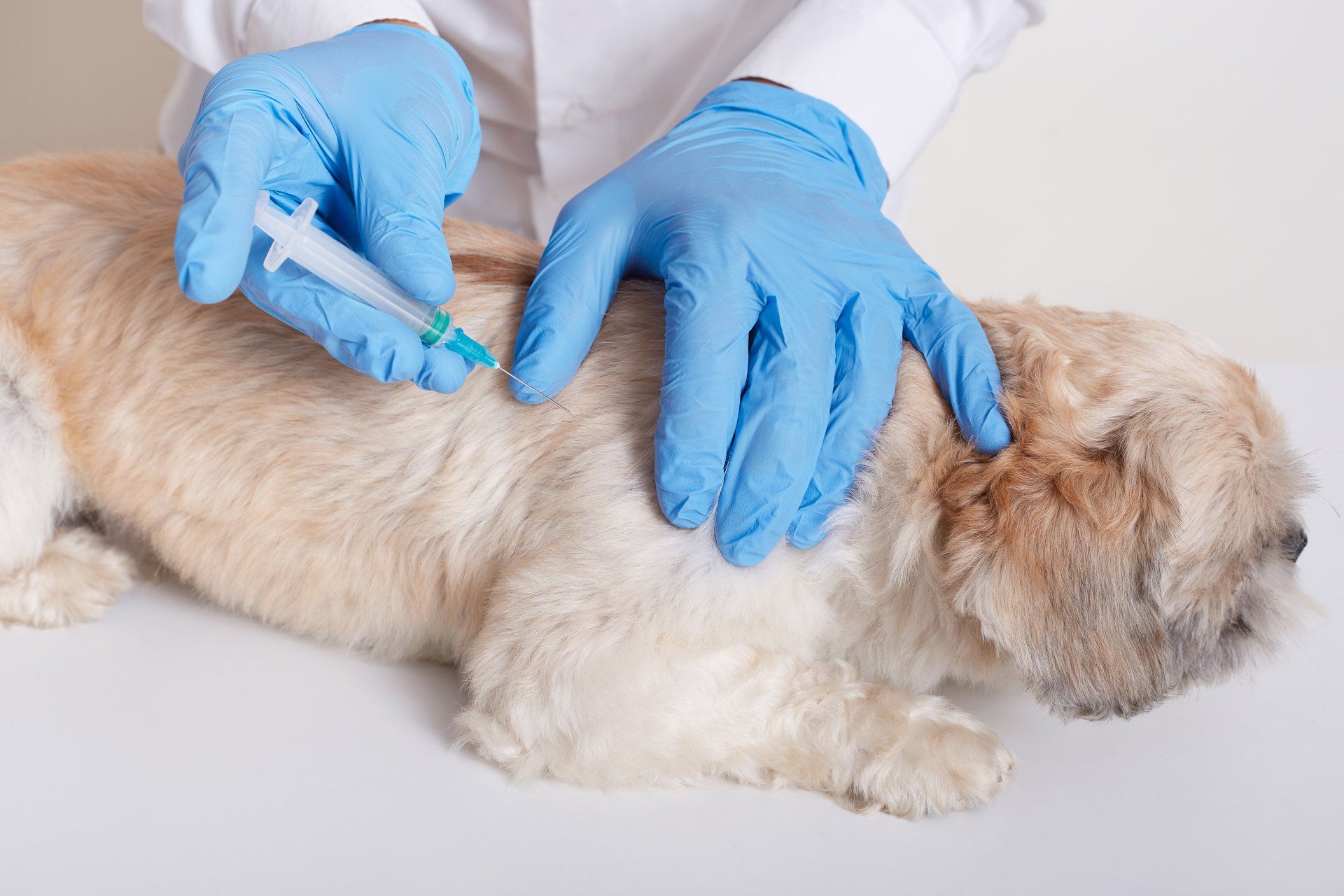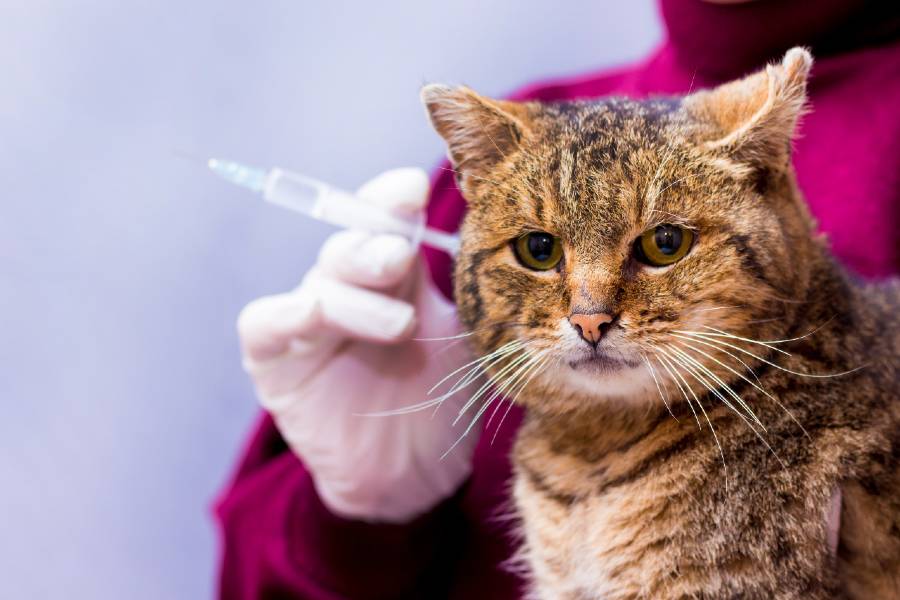Obetz Animal Hospital
3999 Alum Creek Dr
Columbus, OH 43207
Call or text 614-491-5676
Monday - Friday: 9AM-5:00PM
Saturday: 9AM-1PM
Sunday: Closed
Emergencies/after hours assistance
3999 Alum Creek Dr, Columbus, OH 43207 | Call 614-491-5676
Mon - Fri 9am-5pm | Sat 9am-1pm | Sun Closed
Vaccinations
Vaccinating your pet protects everyone, including the other members of your family. Some vaccinations are given shortly after birth and others are administered every one to three years to keep your pet protected and safe.
Vaccines can be broken into two categories; core vaccines and lifestyle vaccines. Check out our vaccine knowledge base below:

These are the vaccines we recommend every dog (or puppy) receives (annually) to ensure they and your family are kept safe. AAHA vaccine guidelines consider the following vaccines core:
- Bordatella (Kennel Cough) with or without canine parainfluenza: Both puppies and unvaccinated adults receive 2 intranasal doses 3-4 weeks apart. Thereafter annual boosters are recommended. We consider this to be a core vaccine because all dogs have exposure to other canines.
- DHPP. Prevents canine distemper, adenovirus (hepatitis), parvovirus, and parainfluenza: All puppies should receive at least 3 doses between the ages of 8 to 16 weeks administered 3 – 4 weeks apart. All puppies should also receive a one year booster. Unvaccinated adults require 2 doses at 3 – 4 week intervals. Annual vaccination is not recommended in adults. This is why it's common to see a 3 year vaccination interval after their 1 year booster.
- Leptospira: Puppies should receive 2 doses between the ages of 12 to 16 weeks administered 3 – 4 weeks apart. All puppies should receive a one year booster. Unvaccinated adults should receive 2 doses 3 – 4 weeks apart. Annual vaccinations are recommended thereafter. We consider Leptospirosis a core vaccine because we see clinical cases every year.
- Rabies: State statutes dictate rabies vaccine protocols. Puppies should receive one dose as early as 4 months. All puppies receive a 1 year booster. Thereafter a dog may go to 3 year vaccination intervals. Unvaccinated adults receive a single dose, a booster at 1 year and boosters every 3 years thereafter. Boosters must be done by the original administration date or the animal will require a 1 year booster.

Cats need to be vaccinated just as much as other pets. Core vaccines are recommended for all cats to protect against diseases that are commonly found in the environment. That means there is a realistic risk of exposure, infection, and the development of a disease (this is particularly the case with kittens). The following vaccines are considered core:
- Feline Panleukopenia: All kittens should receive this vaccine as early as 8 weeks and then at 3-4 week intervals until 16 weeks of age. All kittens should receive a 1-year booster. Non vaccinated adults should receive 2 doses 3-4 weeks apart. Annual vaccination is not recommended in all adult cats. A 3-year vaccination cadence is common.
- Feline Rhinotracheitis: All kittens should receive this vaccine as early as 8 weeks of age and then in 3-4 week intervals until 16 weeks of age. All kittens should receive a 1-year booster. Non vaccinated adults should receive 2 doses 3- weeks apart. Annual vaccination is not recommended in all adult cats. A 3-year vaccination cadence is common.
- Feline Calicivirus: All kittens should receive this vaccine as early as 8 weeks of age and then in 3-4 week intervals until 16 weeks of age. All kittens should receive a 1-year booster. Non vaccinated adults should receive 2 doses 3-4 weeks apart. Annual vaccination is not recommended in adult cats. A 3-year vaccination cadence is common.
- Rabies: State and local statutes determine how often Rabies vaccines are administered. A single dose is required as early as 12 weeks of age. All kittens should receive a 1-year booster. Non vaccinated adults receive 1 vaccine and a booster 12 months later. Thereafter adults can receive Rabies vaccination annually.

Non-core vaccines are recommended for those individuals who are at risk for exposure to certain infectious agents. An example would be recommending Lyme vaccine for a pet that has had tick (which are known to transmit Lyme disease) infestation in the past or frequents areas that are known tick habitats. AAHA vaccine guidelines consider the following vaccines as non-core:
- Canine Influenza: Puppies and adults should receive two doses 3-4 weeks a apart and boostered annually.
- Borrelia burgdorferi (Lyme disease): Puppies should receive 2 doses. The first at 12 weeks and the second 3 – 4 weeks later. Unvaccinated adults should receive 2 doses at 3 – 4 week intervals. Annual boosters are recommended thereafter. Vaccination is recommended for those animals who live in or visit areas where exposure to tick vectors is high or animals who live in an area where the disease is considered to be endemic.

Non-core vaccines are recommended for those individuals who are at risk for exposure to certain infectious agents. The following vaccines are considered noncore:
- Feline Leukemia: Feline Leukemia testing and vaccination is strongly recommended for all kittens and for individuals whose health is compromised. Kittens test negative for the virus prior to vaccination. Two doses are administered as early as 8 weeks of age and 3-4 weeks later. Only cats that are at risk (such as those who go outdoors or indoor cats that are exposed to housemates that are indoor/outdoor) should be vaccinated at yearly intervals thereafter.
Can pets have negative reactions to the vaccines?
On rare occasions, some animals may react to a vaccine. This could cause a low-grade fever, muscle aches, or less commonly more severe reactions such as diarrhea, vomiting, anaphylaxis or death. It is more common in young and toy breed dogs and may manifest as a decrease in appetite or increased sleepiness for a day or two. Some components that may produce a strong reaction can be left out of future vaccines. If your pet has had a vaccine reaction in the past don’t skip future vaccinations, but do discuss it with us so that we can prevent a recurrence.
Is your pet due for a vaccine? Request your appointment today.
Obetz Animal Hospital
3999 Alum Creek Dr
Columbus, OH 43207
Call 614-491-5676
Monday - Friday: 9am-5pm
Saturday 9am-1pm
Sunday: Closed
Emergency/after-hours care
Obetz Animal Hospital | All Rights Reserved | Privacy | Terms of Service | Web Accessibility | Website by Rad Veterinary Marketing



